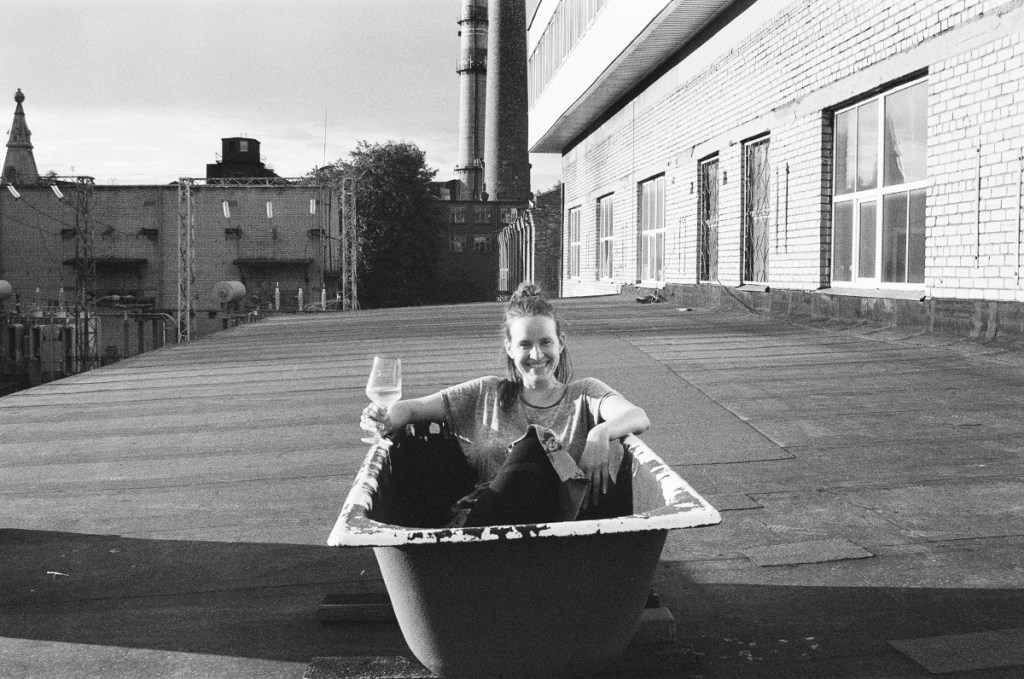This post is part of our interview series to answer the question: who uses Bear? How does Bear fit into their work or play? Do they prefer coffee or tea? We’re on a mission to ask these and other burning questions from interesting people. Then we share their answers with you.
Today we get to speak with Julia Gifford, hailing to us from Latvia. She’s built an interesting workflow in Bear for the agency she runs, and she writes for a Latvian startup site in her spare time. One tip, though: don’t get her started about coffee.
Check out Julia’s interview below. Then catch us on Twitter, Reddit, and Facebook to let us know who else we should interview for future posts!
Tell us about yourself and what you do for a living?
My name’s Julia, I call myself a Canadian-born Latvian startup activist. Right now I’m based in Riga, and I work with a ton of Latvian companies (though not exclusively) on getting them noticed online. This is through my content marketing and PR agency called Truesix.
In my free time I’m also the English editor at Labs of Latvia, the only platform dedicated to Latvian startup news.
How about for fun?
These days fun has taken a different form, eh?
In the before times I would’ve told you about my hobbies like starting acrobatics and tap dancing classes. These days it looks more like cultivating my windowsill garden and brewing kombucha.
How did you hear about Bear, and how long have you been using it?

I heard about it when my friend Artis Krilovs, the director of Wrong (a local digital agency) , told me about it a few years ago. He’s always aware of the latest in-thing, so I knew I had to check it out.
We found ourselves in a meeting together a few weeks later and he glanced at my screen, where I was taking notes in Bear. Seeing the amount of notes I had created he exclaimed that wow, I must write a lot!
Yes. I do.
You mentioned you use Bear in your work for content marketing, to run your agency, and to collect inspiration. Can you talk about your process(es) and how Bear fits in?
I have quite the meticulous process.
We work with many clients, so there are several projects going on at a time, all requiring my attention or that of my team’s. It’s impossible to stay on top of it all without a system in place.
First of all, we organize tasks on a monthly basis. We’ve taught our clients that at the beginning of the month we collect the tasks for the month, so if they want any work done, they have to “reserve” time. That way, we know how much we have on our plates for the month ahead.
We put it all together in a Google Doc, and divide the tasks up among our team. It’s then up to each person individually as to how they keep track of the tasks for the month, but they have to make sure that it’s done by the end of the month.
This is how I organize my tasks.
I create a new note in Bear for the month. I call it “March Task Dump”, for example.
I then create a heading for each week of the month, and I place each of the tasks under one of the weeks, based on how soon they’re needed.
I make sure that my first week has the most tasks, the second week has fewer, the third fewer still, etc. Because when you work in an agency, you’ll always have unforeseen circumstances pop up, and that way you have built in space for them as the month goes on, but gets the bulk of the planned work done upfront. It’s a very effective system.

Then every day when I sit down to my computer and choose a few tasks from the week I’m in and pull just a few of them into a new subheading that I label “Today”. Original, eh? That way I never have that idle time when you don’t know what to do – I can just glance at my taks list.
The most important part here is that each task is created as a checkbox. So that when it’s done you’ve got the satisfaction of checking off the tasks and it turning lighter gray.
Meanwhile for my editing side-gig, I’ve got an ongoing list of article ideas that I can share with the Editor in Chief. Every month I simply pull out a few of the articles that I choose to write for that month, then check them off as they’re completed.
These systems have made all the difference in my life. I don’t have to take up mental brainspace trying to remember tasks or ideas. I have them laid out and always accessible.
What are some of your favorite tricks or features when working in Bear?
My fave feature hands-down is the progress bar under each note that has checkboxes in it – where it proportionately fills up as you check off to-dos. That gives you the visual queue of how far you’ve come and how much you have yet to get through.
Now for some other questions
Let’s sit back and chat about some of the finer things in life.
What has been your hibernation routine for quarantine?

Like for many people, it’s been a whole lot of home. To be honest, it was getting a bit tiring. To combat that, I started to self-enforce a mandatory morning walk to remember what fresh air feels like. On workdays, it also helps to simulate a sort of commute – by the time you get home, you’re in work mode.
Outside of work I’ve been getting crafty – I’ve got a tapestry I’m weaving, which I started at the beginning of the pandemic outbreak. The running joke is that the pandemic won’t end until I finish the tapestry. So, I guess I have to get on that 😅
Do you usually prefer the book, film, comic, or video game?
It’s got to be either book or film…depending on the series.
Coffee, tea, or something else?
Don’t get me started.
I was an 8-cups-a-day of coffee kind of gal, until I quit for a Youtube video experiment a few months ago. It’s never been the same since. I have maybe a cup every other day, now.
That being said, I definitely still do adore coffee. So I’d be remiss to give you any other response.
Where can people follow you online?
I’m a pseudo-active Twitter user, so you can find me there as @julijagifford. I don’t post that often on Instagram, but feel free to join me there as well @julijagifford. And of course, I’d be happy to connect on Linkedin – just let me know in the invite that you’re coming from this Bear interview, so I know to accept you.
Anything else you’d like to share?
My blogging course is on sale! At the beginning of the pandemic we drastically reduced the price of our business blogging course (originally $69, now $10), to make learning a new skill accessible to anyone who might be in need.
It’s essentially a step-by-step guide that takes you through the process of writing a kick-ass article for your business, complete with a consultation with us at the end. I highly recommend taking advantage of the deal while it’s on.
